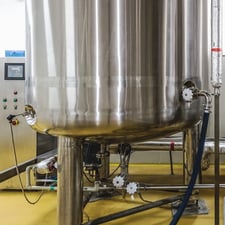Whether you are looking for a solution to solve a tank level measurement issue to a building or trying to monitor a process tank within your factory, the proper tank level is extremely important to the success of your project. There are countless applications across many industries that with a few simple steps can ensure that you can meet the needs of your project.
What type of tank do you have? There are two man types of tanks that are used in the HVAC and Industrial markets; vented tanks and sealed tanks.This simple question will drive the entire decision making process of your application, so the decision is crucial.
With such a wide variety of tanks and transducers to measure liquid tank level, it’s understandable that  sometimes the wrong sensor is selected for an application. Here are a few of the most common mistakes that system designers make when selecting and installing a transducer:
sometimes the wrong sensor is selected for an application. Here are a few of the most common mistakes that system designers make when selecting and installing a transducer:
- Selecting a sensor with the wrong pressure range
- Not knowing what the liquid height is going to be
- Purchasing a sensor without knowing if the tank is vented to atmosphere or is pressurized
-
Choosing a transmitter that cannot be submerged for an in-ground application
-
Mounting the transducer at the wrong height/location
-
Not selecting a NEMA 4 sensor for an outside application
-
Making a purchase without consulting a transducer supplier when it's unclear which sensor is best for the application
-
Not selecting a NEMA 4 sensor for an outside application
- Is the tank vented to atmosphere or is it sealed?
- What is the tank height?
- What is the liquid height that will be measured?
- What accuracy is to be maintained at that height?
- What type of liquid is it?
- What is the specific gravity of that liquid?
- Does the tank already have fittings?
- Does the tank have external pressure points?
- Is it an above ground or in-ground tank?
- What is the excitation voltage?
- What is the desired output, 4 to 20 mA or 0 to 5 V or 10 V?
- Is it an indoor or outdoor application?
- What are ambient and media temperatures?
Selecting the optimum method to measure liquid tank level is an extremely important decision when starting your project. Making the right choice helps ensure that both vented above ground and in-ground tanks as well as pressurized tanks work properly. This means that homeowners will receive water for drinking, water will be available to fight fires in remote residential areas, manufacturers will maintain their industrial processes, and food and beverage companies will continue to produce with less down time. To accomplish this, system designers must take into account many variables to properly measure the liquid in their tanks.
CLICK HERE to learn how to ensure success with your tank level project.


